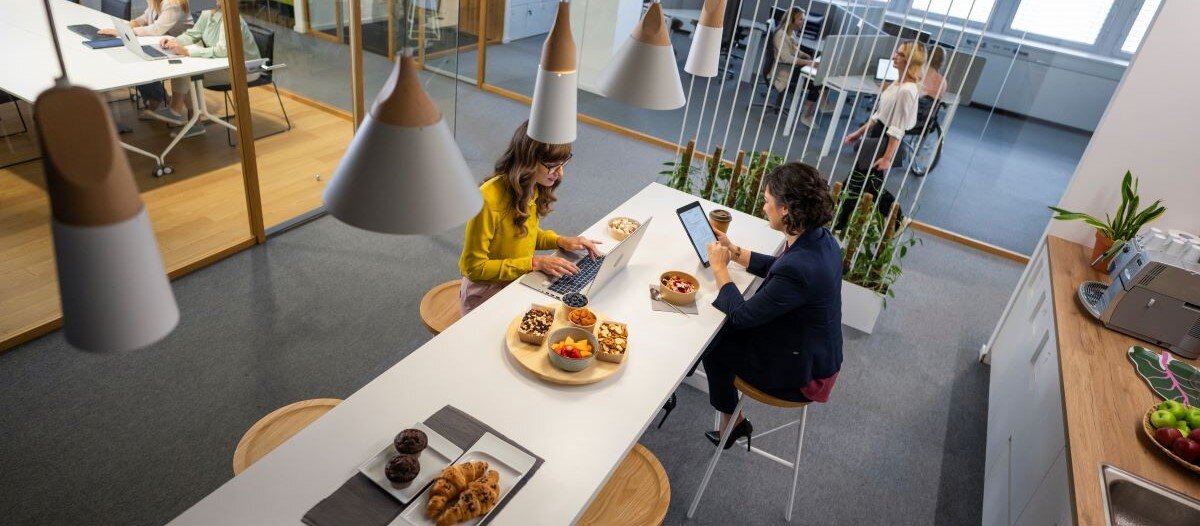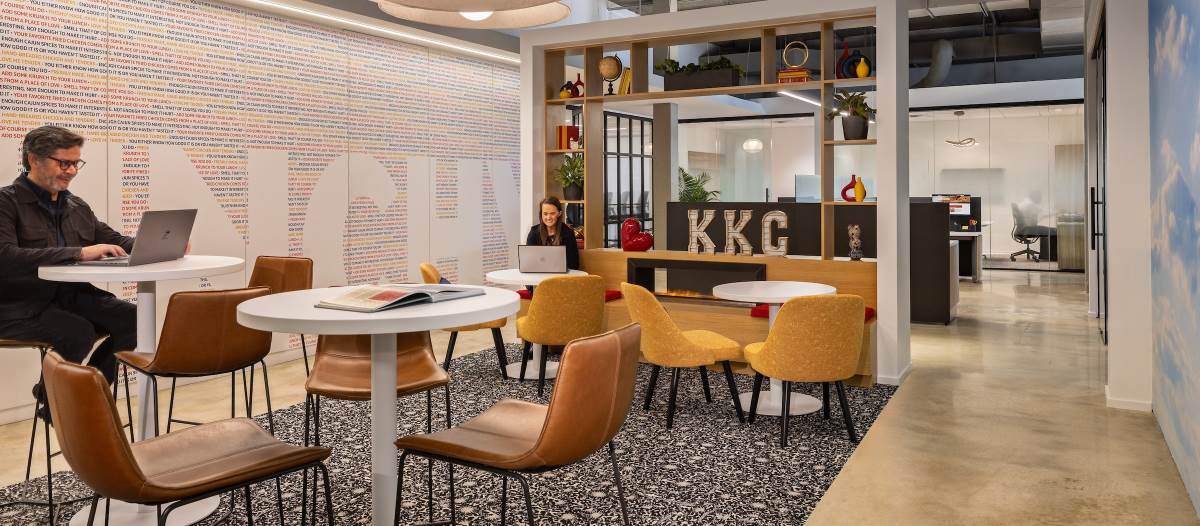Earn the Commute
FM’s role in attracting employees back to the office

It is no secret that remote work appeals to a significant segment of the working population. Yet, many employers are motivated to work against that preference. From city tax incentives for reoccupying vacant real estate to organizational research on the productivity of face-to-face work, multiple influences are pushing employers to get their people back inside the building. A recent report showed 90 percent of companies plan to implement return-to-office (RTO) policies by the end of 2024.
In many cases, this is proving to be an uphill battle. Almost half (47 percent) of employees surveyed by the nonprofit Integrated Benefits Institute said they would quit a job or begin looking for a new job immediately if their employer mandated a full-time RTO. Research firm Gartner has also been studying the so-called “Great Resistance,” and found that women, millennials and high-performers are among the employee groups most likely to resist RTO initiatives.
In response, HR and other employee-experience strategists are heading back to the RTO planning table. As they search for new ideas, facility management’s knowledge of the built environment may be precisely the fresh perspective these strategists need to develop more compelling value propositions for in-office work.
In particular, FM’s familiarity with commercial real estate trends, Internet of Things (IoT) data analytics and agile workspaces position the function to lend creative solutions to a cross-functional RTO strategy group. Organizations would be smart to lean into these capabilities as they look for ways to build out appealing physical spaces for their top talent.
A little luxury for enticing reluctant commuters
HR knows people. FM knows commercial real estate. With a finger on the pulse of this dynamic industry, FMs can see the possibilities for enhancing an organization’s physical environment. Among the trends taking shape in the office space sector is the renovation of previously unused spaces.
To not only match, but exceed, the comforts of home, more corporate tenants are building out luxury community spaces for their employees. High-end amenities like connected gyms with personalized equipment, elegant lounges fitted with premium design and lighting fixtures, and gourmet café, coffee and cocktail bars with high-quality or hard-to-procure options are popping up in more offices.
Even for offices with space limitations, the integration of tiny luxuries can go a long way. An underutilized or empty closet can transform into a micro gym with a single folding machine or IoT fitness mirror. An indoor garden with tunable lighting that mimics the outdoors can slot into a stairwell landing or forgotten corridor. A reading nook with configurable noise machines and ambient illumination could be created from an out-of-the-way corner. Using intelligent building software to control configurable devices and fixtures, FM can even make these venues personalized to individual employees who are recognized and responded to upon entering the space.
Certainly, tumbling commercial property values can complicate renovation projects. However, FM’s expertise can be a great help here, as changes to once-expensive installations are lending greater affordability to remodeling projects. Advances in value engineering, energy-efficient solutions and light-labor electrical can make the ROI of an RTO renovation much more palatable to decision makers.
Low-voltage infrastructure for multipurpose workspaces
It is not unusual for people to think of FM as maintaining the status quo of a static asset. With today’s interdependence of technology and buildings, however, nothing could be farther from the truth. FM’s knowledge of advanced networking and connectivity can help RTO strategists build flexibility into their strategy from day one.
High-tech multipurpose spaces, for instance, can be created to offer returning employees options for teamwork, hybrid communication and focused time. With different zones for different tasks, people can make phone calls in a soundproof pod, have an impromptu meeting at a set of unassigned desks or collaborate in a pop-up lab.
The increasing footprint of low-voltage power delivery infrastructure, like power over ethernet (PoE) and fault managed power (FMP) in the commercial real estate sector is making multipurpose rooms even more functional. With low-voltage infrastructure in place, connected devices like smartboards and intelligent furniture like movable workstations — most of which run on DC power — can easily be relocated without the need for core drilling to maintain power supply.
Labor benefits of DC-based power infrastructures
FMP systems limit the energy that can go into a fault, mitigating the risk of shock or fire and allowing for installation by a low-voltage electrical contractor. Similarly, the PoE Consortium says PoE can save as much as 30 percent on installation projects that may otherwise require a licensed electrician.
Analytics for on-the-fly creature comforts
One of the biggest challenges facing RTO strategists is the unpredictability of the response to their plan execution. Whereas some people relish the idea of getting back to normal — seeing their favorite colleagues around the water cooler and accomplishing big tasks with an in-person team — others have found the work-from-home experience, with all of its autonomy, flexibility and focused-work time, too good to leave behind.
Unless an organization plans to implement a mandate, it can be hard to forecast how many employees an RTO strategy is likely to compel. This is why baking real-time analytics into an RTO plan is crucial. FM’s growing understanding of data ingestion and analytics from an expansive set of IoT devices and systems can facilitate the development of smart goals and response plans within the RTO strategy.
For example, part of the RTO plan includes a desk hoteling strategy. By collecting data from sources like hoteling software, occupancy detectors, temperature and humidity gauges, and onboard smart desk sensors, FMs and their HR colleagues can understand in real time (and over time) which areas of the office appeal most to employees. As organizations take inspiration from the creature comforts of the home office, analysis like this helps designers make on-the-fly changes to the layout and qualities of various workspaces to make them more enticing for team members. It is also important to consider methods for capitalizing on the innate perks of in-office working. Employees who enjoy coming into the office often do so because of things like on-site IT support, volume copy and printing capabilities, reduced distractions and clearer work-life boundaries. By finding creative ways to measure and report on employee engagement with these perks, FMs can become even more indispensable partners to their HR and C-suite colleagues as they adjust RTO campaigns and strategies. Some examples may include comparing IT ticket resolution times between home and in-office employees or contrasting the logged-on times of telecommuters with traditional commuters.
RTO strategy that moves the needle
Layering FM’s innovative ideas for physical enhancements over top of HR’s intelligence around employee expectations can help organizations develop RTO initiatives that are inclusive of the full employee experience. Importantly, they can help design strategies that are not only innovative, but also highly executable and affordable. By emulating, and expanding on, the perks of the home office, employers will have an easier time earning the commute of reluctant team members. With the right mix of cultural values, meaningful work and exciting physical spaces, those same employees may even come to enjoy getting back into the building.

Read more on Occupancy & Human Factors , Networking and Workplace
Explore All FMJ Topics









